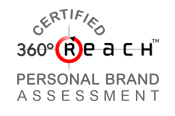 “Wherever there is danger, there lurks opportunity; whenever there is opportunity, there lurks danger. The two are inseparable. They go together.“~ Earl Nightingale
“Wherever there is danger, there lurks opportunity; whenever there is opportunity, there lurks danger. The two are inseparable. They go together.“~ Earl Nightingale
Have you ever experienced one of those phone calls when you hear someone’s voice and immediately sense danger or distress?
I’ve had those calls. Often they begin with a simple request like, “Hi, I need some help . . . ” I feel the distress or danger and my thoughts begin to race. What’s the danger? Where is this person? And so on. The distress in their voice and the energy on those calls can be very intense. Luckily, I usually know within a few seconds that no one is physical danger and no on was injured.
When I reflect back on the calls, the quote above almost always comes to mind and is a reminder that the line between danger and opportunity is very thin.
Preparation and awareness are the key to creating the best outcomes — to turning danger into opportunity. And, in business and our careers in particular, we often turn those “thin” moments into unique situations — presenting us with better than envisioned outcomes, connections and profitable opportunities. Applying this preparation and awareness to our knowledge creates focus and the successful outcomes others may view simply as luck.
For a long time I sought the awareness I saw in others — awareness I thought was just easy luck. Then I discovered I had the awareness I needed, yet too often I ignored it or simply forgot to pay attention to it. The impact? Loads of missed opportunities right at my fingertips, ripe for the taking.
My first coach helped me discover why I ignored the great stuff. It turned out to be a simple issue, though one I could not have seen without help. Now, my nutrition coach is helping me tackle why I ‘forget’ self care — hydration, rest and better nourishment. Their coaching makes me better prepared, creating the focus and awareness I once thought was simply luck.
Recently, a client, whose goals were to create focus and successful outcomes, opened with the distress call, “Hi, I need some help . . .” Through our interaction he tapped into his internal awareness and built into his search what he called a “lifeline call” to help him deal with the thin points. Using his lifeline, he turned an unexpected question about relocation into an opportunity, then a second interview and through a continued conversation, a great offer.
Are you aware of the opportunities around you? Are you tapping into them?
Are you ignoring or overlooking opportunities because you only see danger?
Are you creating your own “luck” or just hoping for the best?
Have you built a support network so you can place the “lifeline” call if you need to ?











